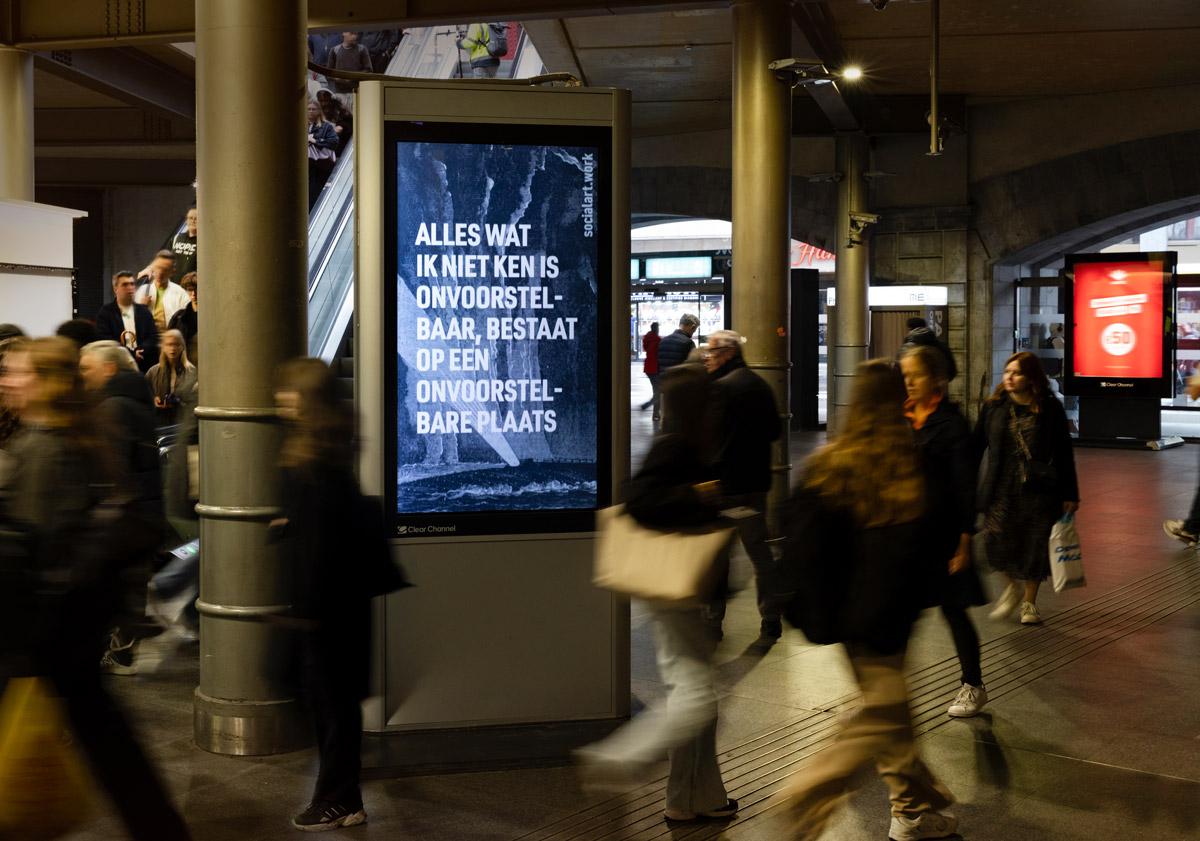We use the cookies _ga, _gat, _gid to collect anonymous data about how you use this site. OK.
Alles wat ik niet ken is onvoorstelbaar, bestaat op een onvoorstelbare plaats, 2024
Alles wat ik niet ken is onvoorstelbaar, bestaat op een onvoorstelbare plaats (Everything I Don't Know Is Unimaginable, Existing in an Unimaginable Place)
marks the 100th anniversary of the publication of the first manifesto of surrealism.
André Breton (1896-1966) is usually regarded as surrealism's founder but the Franco-German poet Yvan Goll (1891-1950) published the movement's first manifesto 14 days before Breton.
In stark contrast to Breton's interest in dreams and chance, Goll's surrealism called for an investigation into the nature of reality itself, which would lead to a profound understanding of reality's inner structure and, in turn, to a higher or
sur-reality.
Alles wat ik niet ken is onvoorstelbaar, bestaat op een onvoorstelbare plaats (Everything I don't know is unimaginable, existing in an unimaginable place)
expresses a Gollian-surrealist truth about the nature of the unknown.
What is unknown to the observer stands necessarily beyond their subjective reality. It is a profound truth of our quotidian lives that what we do not know, we cannot imagine. And it would be equally realistic to claim that what we cannot imagine exists in a place, which is itself beyond imagination.
The artwork repurposes an illustration by Jules Férat (Jules-Descartes Férat 1829-1906) from Jules Verne's
L'Île mystérieuse (The Myserious Island)
first published in book form in 1875. The novel's protagonists crash-land on an unknown island which is later revealed as the last hiding place of Captain Nemo and his
Nautilus
submarine.
Nemo is an old man now and, before he dies, he reveals his true identity as the lost Indian Prince Dakkar from the independent territory of Bundelkund. When the Indian Rebellion against British rule failed in 1857, he went into hiding, changed his name to Nemo and built the Nautilus. His final words are "God and my country!" or the more inflamatory "Independence!" in Verne's original manuscript.
The three images deployed by Firrell in
100 Years of Surrealism
tell their own parallel story of the power of imagination, the human desire to control what is wild, and the equally strong impulse to resist all and any forms of control - important themes in the artist's oeuvre as a whole.



